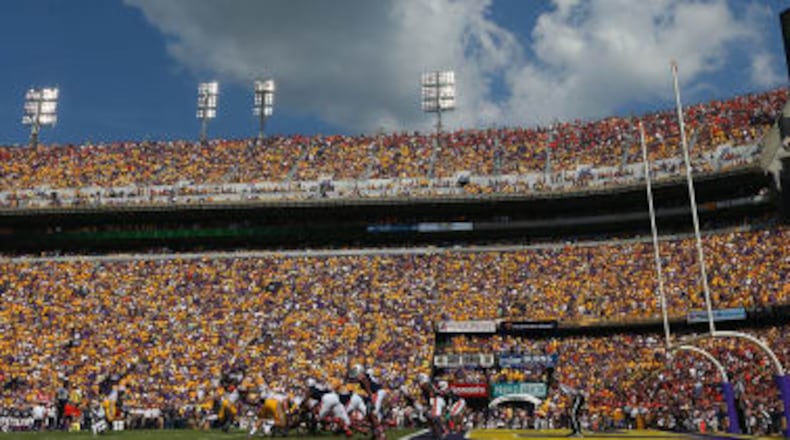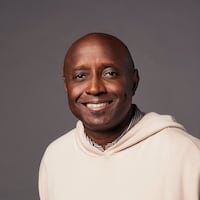There's tension between my view that it's wrong for colleges to ask unpaid athletes to take the field during the novel coronavirus pandemic and my anxiety about what fewer football games means for a sportswriter in SEC country. For Zachary Binney, an epidemiologist at Oxford College of Emory University, the quandary is squaring his love of sports with his expert opinion that it may be too risky for games to be played.
“I do wear two hats, sports fan and public-health professional,” Binney said Tuesday. “I was always an epidemiologist focused on sports. I never in a million years foresaw them colliding in this way.
“It’s a struggle wanting sports to come back and recognizing what the risks are, and feeling compelled as a public-health professional to go against my interests as a sports fan.”
That dichotomy is what I found relatable about Binney's nuanced, informative blog post with the title: "Covid-19: How Can Sports Come Back?" When Binney updated the post May 27, he still felt generally optimistic about football being played safely in the fall. Fans in stadiums are out of the question, but there could be games without them.
That was before several states reported spikes in COVID-19 infection rates. Now Binney said he’s “more pessimistic” that football can be played in the fall. And he’s calling for college football programs to suspend their so-called voluntary workouts after reports of several COVID-19 infections among athletes at multiple schools.
“A month ago, it was not clear if they were up to the task” of keeping athletes safe, Binney said. “Now it’s clear that even some of the major, well-resourced programs aren’t up to the task.”
USA Today wrote that at least 34 NCAA Division I schools have reported positive COVID-19 cases for athletes who returned for workouts. Outbreaks forced Kansas State, Boise State and Houston to shut down workouts. Boise State shut down its entire campus until at least next week.
LSU has isolated at least 30 athletes who were either infected by COVID-19 or were in contact with infected people. Seven other SEC schools reported positive tests: Alabama, Arkansas, Auburn, LSU, Mississippi, Mississippi State and Tennessee. Clemson announced 23 positive tests, including 21 football players. Texas said 13 athletes tested positive.
“That’s enough evidence to say too many schools are not providing a safe enough environment,” Binney said. “It’s not worth it to me, especially if the only reason they are coming back to campus is for athletics.”
There likely are more COVID-19 cases than disclosed among college athletes. The Associated Press reported more than half of the 66 FBS programs that responded to its inquiry said they will not publicly release the number of positive tests for athletes. The list includes Georgia, Georgia Tech and Georgia State.
No public disclosure by schools means less scrutiny of their ability to keep athletes safe. Student privacy isn’t a legitimate argument against it. The number of positive tests can be announced without including names or even specific sports.
The schools reporting positive tests say that many of them happened during initial screening when athletes returned to campus. They say positive tests at the outset of workouts sets a baseline for further testing and precautions. But LSU didn’t test its athletes when they came back.
Shelly Mullenix, LSU’s senior associate athletic trainer, told Sports Illustrated that the program’s surge in COVID-19 cases isn’t related to the lack of initial testing. Mullenix said some athletes had gathered at off-campus bars. State officials said more than 100 people who went to those establishments tested positive for the virus.
Said Binney: “If the only reason they are back on campus is because you wanted them there, you are responsible for any outbreak. Not just in the weight room or athletic facility, but any outbreak based on what students might foreseeably do.”
It is foreseeable that college athletes will go to bars or other social gatherings with other students and members of the general public. That’s why what happened at LSU could be a preview for the fall. Sports programs may be able to create a relatively safe environment for athletes, but what happens when they are outside of that zone?
The “bubble” model that MLS and NBA are planning won’t work for college athletes. They can’t be quarantined for weeks at one site away from the outside world. In their case that includes students, faculty, staff and support workers on campus.
Travel is another big obstacle for college football. Safe transportation on commercial airliners or buses is only part of it. The NCAA has no uniform protocols for COVID-19, so the risk of exposure could depend on how well the visiting opponent follows guidelines. The location of the game is another variable: teams from low-risk areas going to high-risk areas, and vice versa.
Binney said he still believes it’s feasible to play college football games safely with guidelines that include masks, very limited indoor gatherings and at least one test per week on the day before games. But he’s become more concerned about games being played because of the continued regional outbreaks of COVID-19.
Binney said that unless schools do an impractical amount of testing (“every student, every other day”) then an outbreak near campus probably will lead to an outbreak on campus.
“It all depends a on a mix of individual behavior and policy response,” Binney said. “We know that some areas have high exposure and some are fine, we just don’t know which areas will be in which column at which times. Some areas probably will be able to operate (football) OK. Others won’t.”
In March, I figured the NCAA wouldn't allow athletes on campuses that were closed to other students because it would make it harder to maintain the fiction that athletes aren't workers. I should have known better. Schools are so desperate for football revenue that they brought their unpaid players back weeks ago to get them ready to play in the fall and winter.
At the same time, colleges are attempting to put more of the risk on players by protecting their institutions from legal liability should athletes become infected. A Georgia Tech spokesman said the standard “risk acceptance form” that athletes sign every year now includes COVID-19. Georgia and Georgia State said their athletes didn’t have to sign anything related to COVID-19.
University leaders also are asking lawmakers to limit their liability when campuses open in the fall. Last month an education group that represents 1,595 institutions, including all of Georgia's NCAA members, lobbied Congress for insulation from any lawsuits related to COVID-19 filed by students, faculty and staff.
To say it’s no big deal if young and healthy athletes get sick is to ignore any possible underlying health conditions (especially among the largest football players) and the potential for long-term effects (including lung damage). And even if athletes don’t become seriously ill with COVID-19, they still can spread it to older family members, coaches and administrators.
I would like to see college football in the fall because I enjoy the sport and it’s my job to cover it. But it’s not right for schools to allow unpaid players with little bargaining power to take the risks. I don’t want to see players, coaches or staff members get sick.
I was glad to see another sports fan with a conflicting professional view agree.
“Believe me, I want to watch a Bulldogs game this fall,” Binney said. “I just don’t think it’s ethical to have students back for workouts. If not having them means we can’t have football in the fall, then it is what it is.”
About the Author
The Latest
Featured

